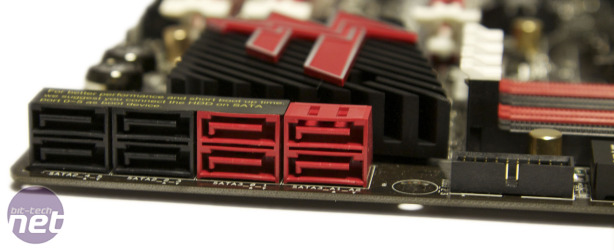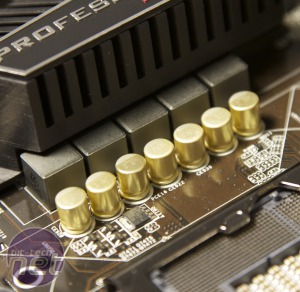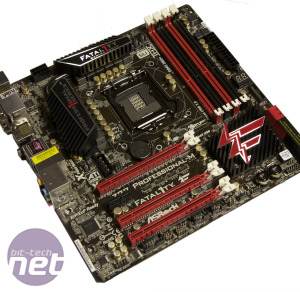
Performance Analysis
Building a system around the Professional-M proved to be a simple task, as the board is laid out sensibly with all the relevant sockets and slots located close to the edge of the board. The one exception here is the 4-pin molex that you’ll need to populate if you want to run either SLI or CrossFire, as it’s sandwiched between the first PCI-E 16x slot and the VRM heastisnk, meaning you’ll have to snake a power cable across the board to get to it.We were soon up and running with our testing though, and things did not start well for the Professional-M. It’s score of 1,855 in our image editing test was merely average, while the 3,248 points it garnered in the video encoding test was rubbish. That’s a full 200 points (six per cent) behind a board that’s only £10 more expensive.
It was a similar story in our stock speed multi tasking test, meaning that the Professional-M ended up at the bottom of our Z77 board table. We were a little perplexed by this score, as we couldn’t see any reason for stock speed performance to be so poor.
After a little investigation though, we found that it was the way that the board was turbo boosting that was adversely affecting its score. It was far less aggressive than the other boards we’ve tested, only boosting up to the CPUs maximum of 3.9GHz when one or two cores were loaded. This is in sharp contrast to what we’ve seen up to this point, as most boards merrily boost to 3.9GHz, even with four cores loaded.
Thankfully Turbo Boost doesn’t come into effect when overclocking, so the Professional-Z performed much more in line with our expectations when overclocked. It actually even outperformed the Gene - our current favourite Z77 board - in both the image editing and video encoding portions of our Media Benchmarks. This lead to the Professional-Z scoring the highest overclocked score we’ve seen to date, though only by a whisker.
Gaming proved to be a similar story, in that it was poor at stock speeds but in line with the other boards we’ve seen when overclocked. And SATA read and write speeds were also quick; the board had the quickest SATA 6Gbps write speed we’ve seen to date for a Z77 board.
Conclusion
Given what’s just been said above, we’re a little split when it comes to our thoughts on the Fatal1ty Professional-M. It’s good to see ASRock producing solid boards that challenge the big boys, but we can’t help thinking that they may have missed out slightly again.Yes, the board is quick when overclocked, but stock speed performance is disappointing - and it’s down to a silly error on ASRock’s part. This could be fixed in a later EFI update, but should never have been the case in the first place. We’re also slightly dubious about the involvement of Mr Wendel - he may be a draw for some, but the brash Fatal1ty branding is likely to put off just as many.
You can’t however argue with the feature list, and the board does look good, gamer branding aside. The price is competitive too, so opting for the Professional-M would hardly be a major mistake. For our money though the Gene still edges it as our favourite board as it's quicker at stock speeds, looks just as good and costs only £8 more than the Professional-M.
-
Speed38 / 45
-
Features22 / 30
-
Value22 / 25


MSI MPG Velox 100R Chassis Review
October 14 2021 | 15:04











Want to comment? Please log in.